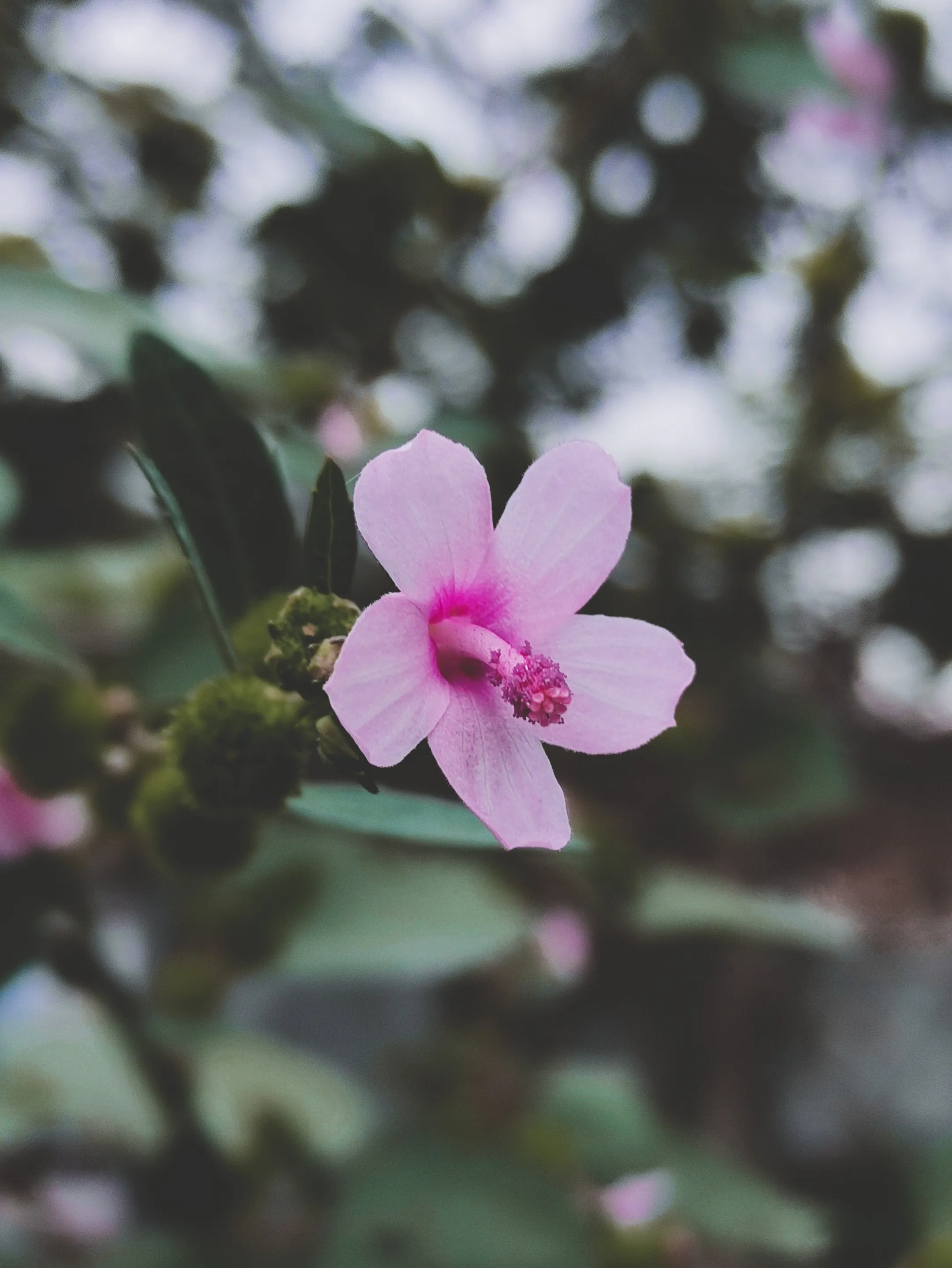Weed hibiscus
The pink hibiscus plant has a clump of large burrs on it, rough around the edges, and smallish flowers.

Whilst weeding recently with the Boreen Point Bushcare group we came across a pink hibiscus plant with a clump of large burrs on it. Its rough around the edges look, and smallish flowers made us suspicious, so we decided to seek some higher advice from Noosa’s native plants online.
Our investigations lead us to Urena lobata (pronounced you-REEN-ah low-BAR-tah), which has its origins linked to tropical Asia rather than parts of the Sunshine Coast. Urena lobata was probably spread to large parts of its current range by Aboriginal voyagers through its use as a fibre and medicinal plant.
Urena lobata is commonly known as weed hibiscus, pink burr, Caesar weed or Urena burr. It spreads by seeds and produces fruits with hooked spines which easily attach to animal fur and/or people’s clothing (Austin, 1999). The Queensland government notes Urena as a weed of waterways (ie riparian vegetation), swamps, forest margins, open woodlands, roadsides, waste areas and disturbed sites which is similar to some of the local hibiscus species Hibiscus diversifolius and Hibiscus splendens.
Local hibiscus species and Urena lobata both belong to the Malvaceae family, as does the marshmallow plant, Althaea officinalis.
The younger stems are green and densely covered in star-shaped hairs, while its older stems become woody with age. The alternately arranged leaves (4-10 cm long and 1.5-8 cm wide) are borne on stalks 1-9 cm long. The lower leaves are egg-shaped in outline (i.e. ovate) or somewhat circular in shape and vary from being almost an entire leaf to being shallowly three or five-lobed. However the uppermost leaves are smaller and narrower, usually being only 4-7 cm long by 1.5-3 cm wide. All leaves have margins and pointed tips. Both leaf surfaces are covered in star-shaped hairs (i.e. they are stellate pubescent), which are much denser on the undersides.
How to tell the difference
| Urena lobata | Hibiscus diversifolius | Hibiscus Splendens | |
| Common Name | Urena burr | Swamp hibiscus | Pink hibiscus |
| Conditions | Prefers wet marshy conditions, tropical areas | Prefers swamp, wet areas | Prefers fertile soils on the coast and rocky areas in hinterland |
| Flower sessile | Pink with dark eye, 3-4cm, spring, summer | Pale yellow with dark maroon centre, most of the year, preferring warmer months | Pink, most of the year, preferring warmer months - to 15cm |
| Leaves 3-5 lobed | Rough, felty, both leaf surfaces are covered in star-shaped hairs (i.e. they are stellate pubescent) | Alternate, serrate, hairy. The lobing is only shallow and the leaf margins are irregularly toothed. The leaf surfaces are rough to touch because of the short, stiff, bristle-like hairs | Felty, alternate, serrate, hairy |
| Stem | Reddish, rough, fine prickly | Prickly | Prickly |
| Size | 0.5-3m | 0.5-3m | 0.5-7m |
| Fruit | Spiny capsule (burr) | Pointed seed capsules | Hairy seed capsules to 30mm long |
Written by Gemma Wright, Noosa & District Landcare
